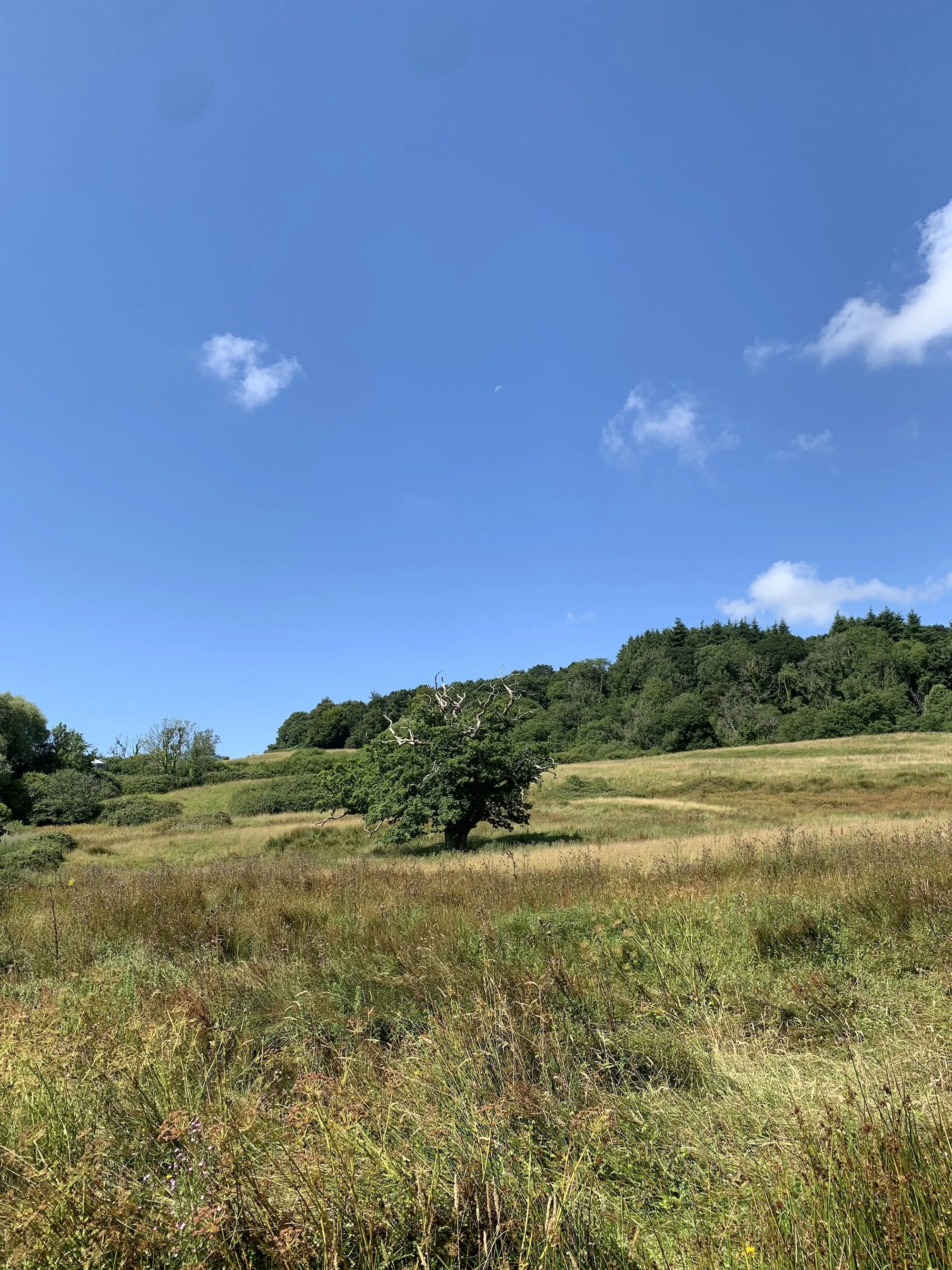A snout comes peeking out of the long grass and is quickly followed by the head and body of stocky, rust-coloured pig. Eyeing us with interest it waddles over and promptly begins rubbing itself vigorously against my brother’s legs, nearly knocking him off his feet in the process.
When it becomes apparent that we’ve not got any treats, the pig huffs and turns on its tail, heading back into the tangle of nettles, thistles and dandelions that border the grassy trail. Seconds later another pig follows, chewing contentedly as its scratches its back on Jon’s trousers, before also deciding we’re not worth further time and waddling away.

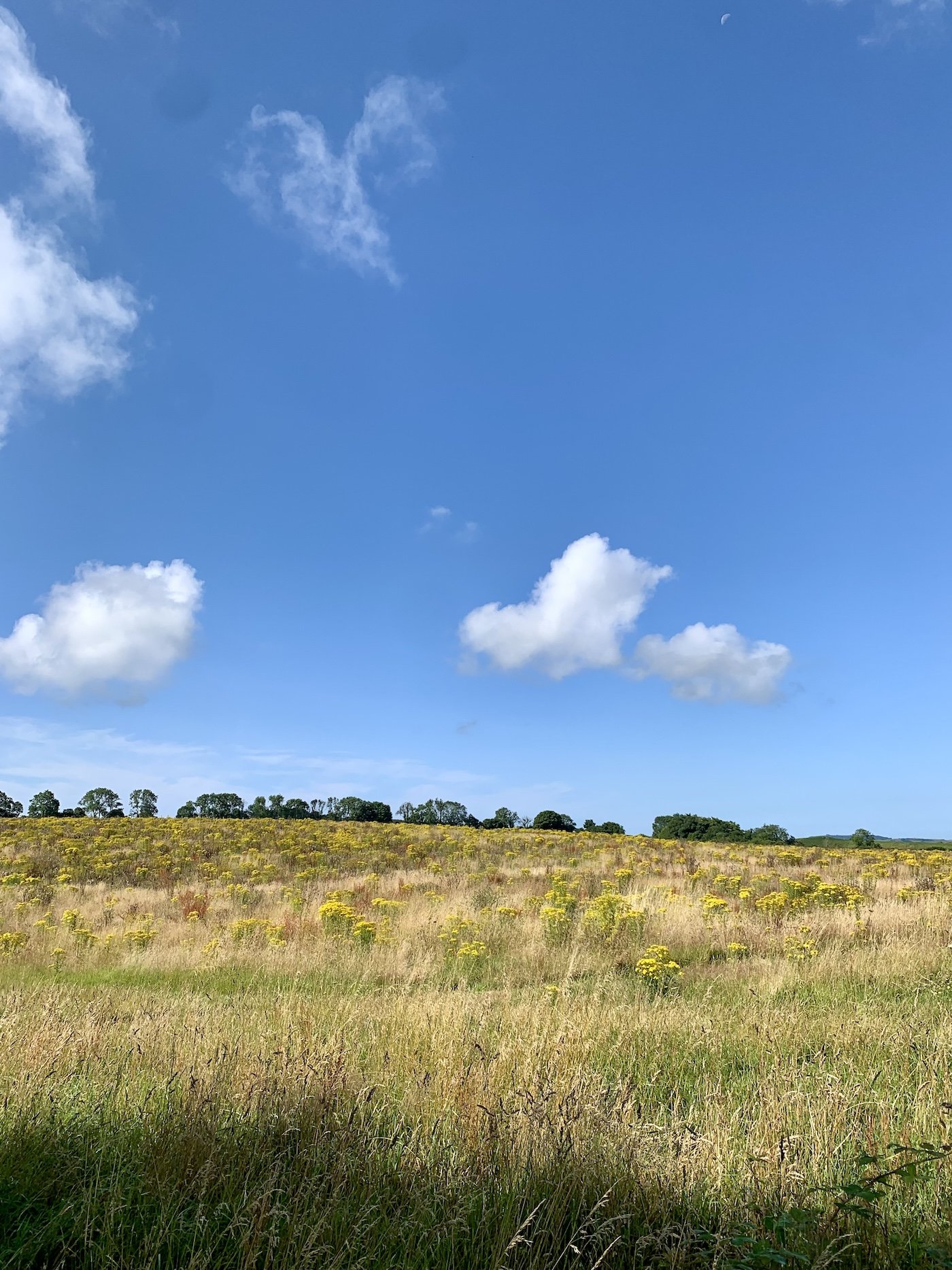
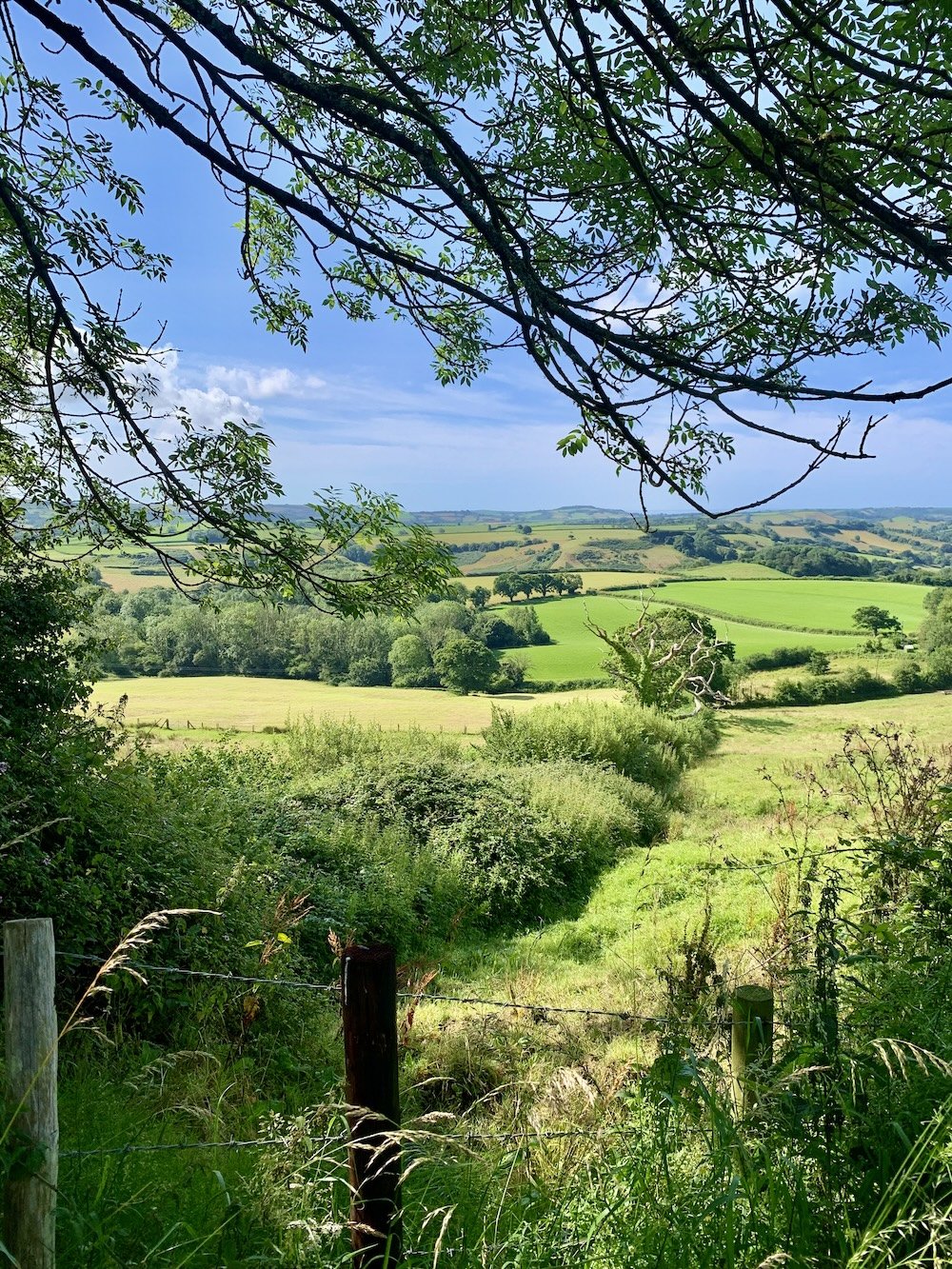
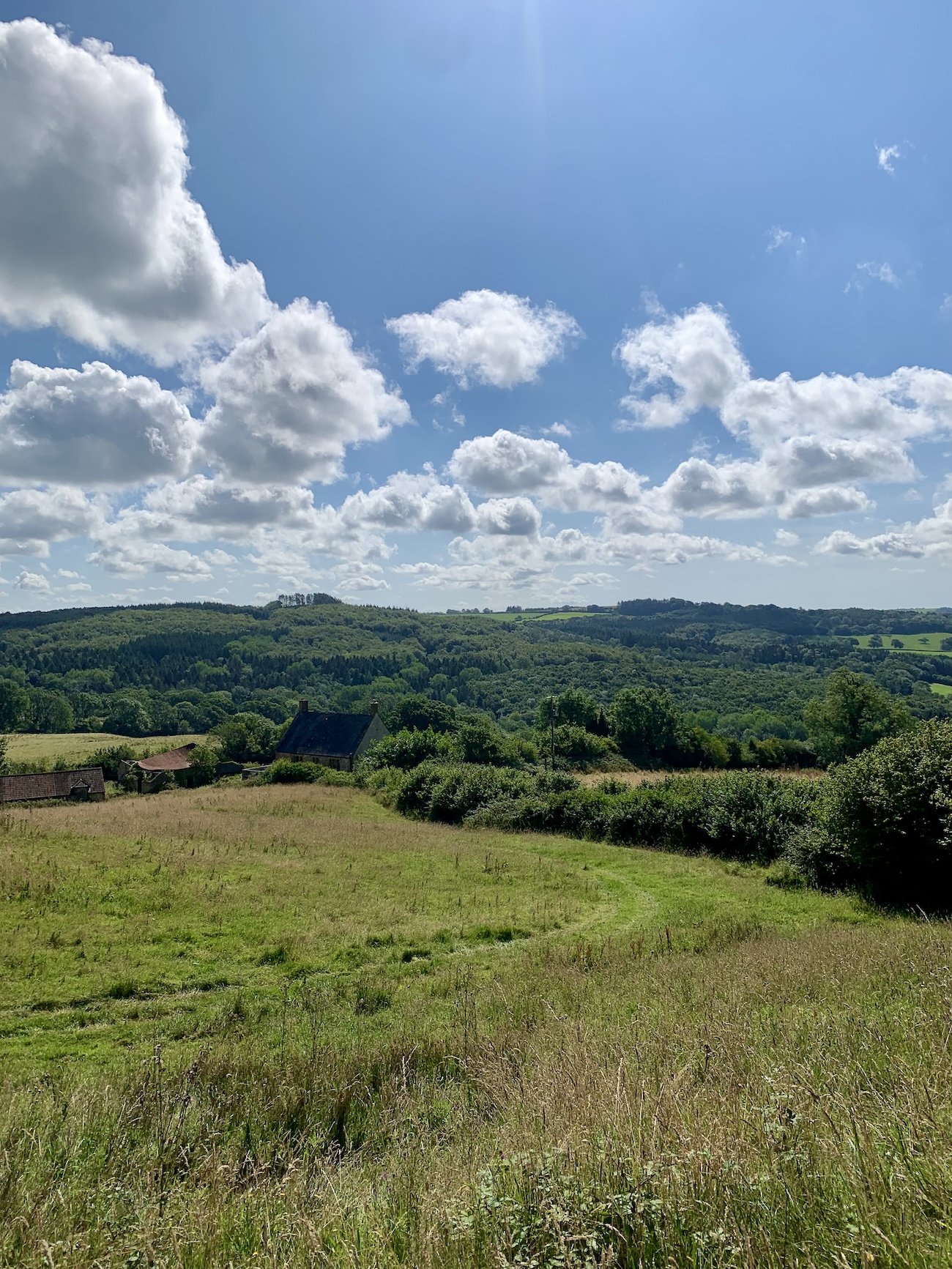
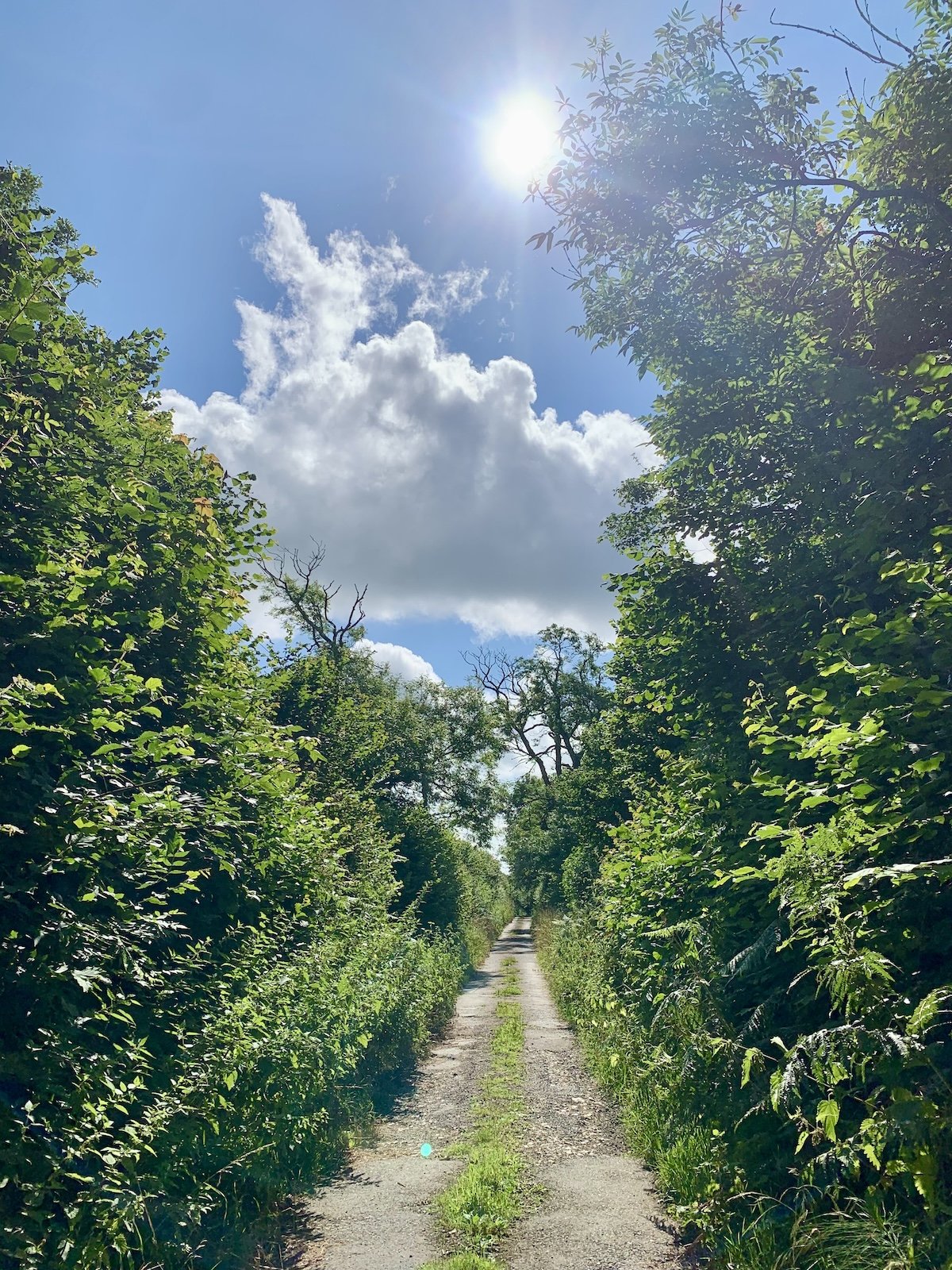

Over in the ragged hedge line, a herd of shaggy-haired Exmouth ponies are huddled together under the hawthorn, attempting to escape from the heat of the mid-morning sun. Beyond them the landscape tumbles away, a hazy sea of greens and browns, the crests and hollows of fields and hedgerows stretching off towards the horizon where they are met by the sapphire sparkle of the English Channel.
Exmouth ponies roam freely on parts of the Estate.
The land seems to almost hum, thanks to the whirr, click and buzz of insects, while the deep throaty coo of woodpigeons and the occasional rattle of a distant woodpecker are the only other sounds to disturb the wonderfully bucolic scene.
My brother and I are halfway through a walk on the Mapperton Estate, a 1900-acre sprawl of formal gardens, woods and farmland in west Dorset. We’re not here for the grand country home though, but to enjoy a Safari through the ‘Wildlands’, the estate’s nascent attempt to forego the ruthless efficiency of modern farming practices and let nature work its magic.
Mapperton is one of the latest places in the UK to embrace the concept of rewilding. This growing trend looks to restore natural ecosystems and biodiversity by allowing wild species to thrive in their natural habitats. This involves creating or restoring areas of wilderness where nature can take its course, free from human interference.
It’s something I’ve read much about but now, finally, on a truly beautiful summer’s day in July, I am visiting Mapperton to see the progress of their attempts to restore around 1000 acres of marginal farmland (land less suited to traditional agriculture) and woodland back to their natural state. The initiative was launched in 2021, and the free roaming Tamworth pigs, the pony’s and the long horned white park cattle are simply the most visible evidence of the impact to date.
A simple booklet guides us round 10 Safari Stops – each offering us an insight into the rewilding process and the flora and fauna that the estate owners hope to slowly bring back to this land. We learn of how the rootling of the pigs has left the ground uneven and treacherous to unwitting ankles, but also provides a positive benefit on the health of the soil and promotes the regeneration of native grasses and wildflowers. We are taught how to differentiate between the four deer species Roe, Fallow, Sika and Muntjac that can be found on the estate, how to identify common blue, meadow brown and painted lady butterflies and what the difference is between grass, sedges and rush.
The walk takes us via narrow country lanes, up and down undulating meadows, boggy marsh guarded by drooping willows and skirts hedge lines of ash, maple, hazel and hawthorn that conceal historic badger setts and wild herbs. On the way we spot buzzards soaring in the thermals above gnarled, centuries-old oaks, while chiffchaffs and skylarks chitter away in the gorse bushes and swallows swoop low across the grass in a bid to catch the banquet of insects.
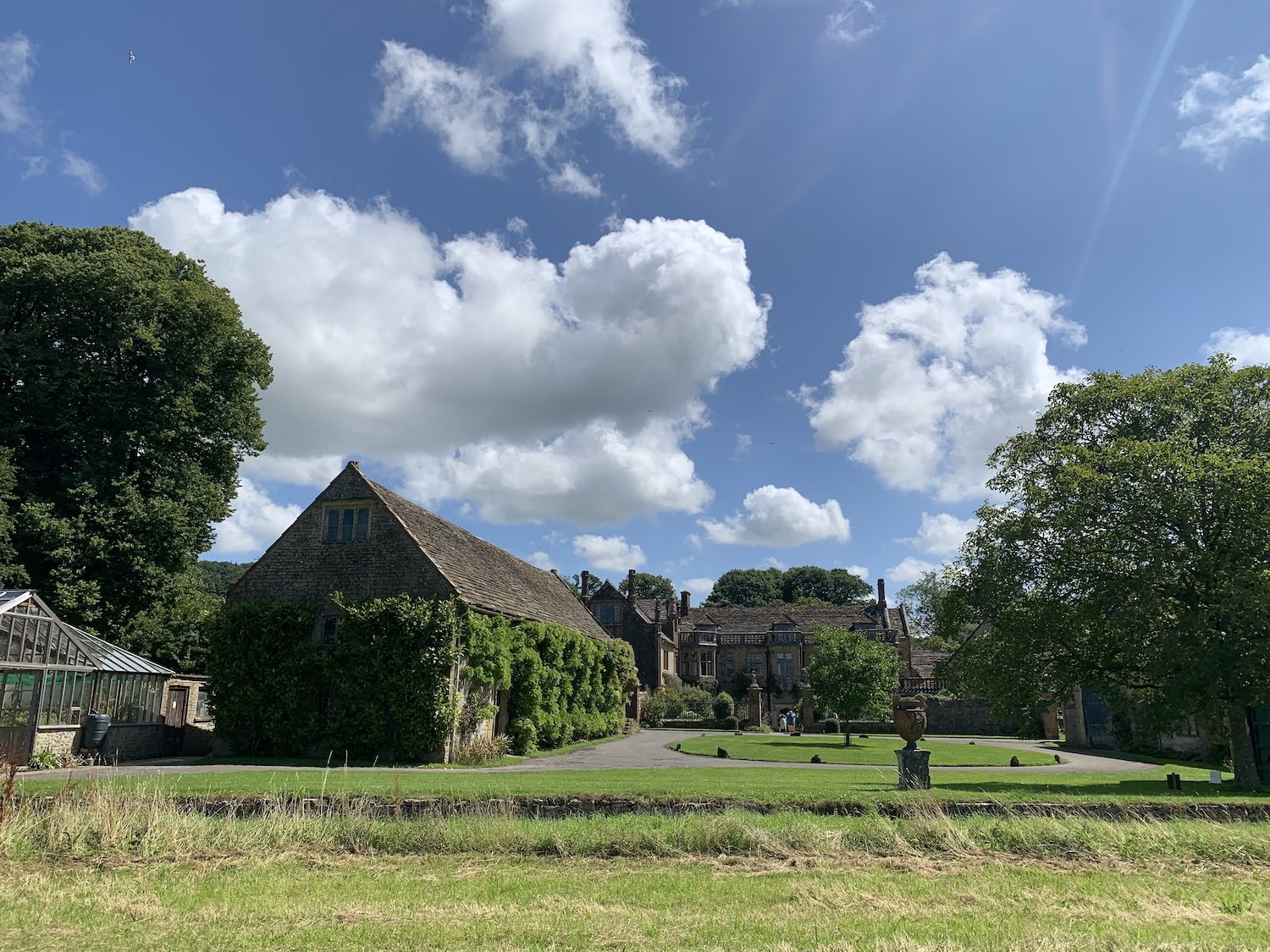
Of course, not everyone shares my enthusiasm for the rewilding process. Many have criticised the reintroduction of large mammals such as bears, wolves and wild boar, into areas of Europe as potentially leading to increased conflict between humans and wildlife. Others have pointed to the fact that rewilding is often only available to those with the land to do it and can be very costly returns can take time to start making money. It’s only fair to point out that the owner of Mapperton, is Viscount Hinchingbrooke Luke Montagu and the son and heir to John Montagu, the 11th Earl of Sandwich!
Still despite these criticisms, I can’t help feeling that this approach really can’t be any worse than the last 80-years of intensive farming which have embraced mono-culture, pesticides and fertilisers and obsession with mono-crops have destroyed natural habitats, water sources and the health of the soil. Continuing with this approach long term really doesn’t seem viable either.
Of course there also doubts over the long-term impact of rewilding and how it might impact wider ecosystems. At Mapperton it is still to early to answer, three years is no time in the grand scheme of nature. Still it already feels like the land is breathing a little easier. As we wander across the fields, grasshoppers, bees and butterflies rise up out of the long grass of the meadow that’s dotted with evocatively named flowers like pignut, knapweed and Bird’s Foot Trefoil.
There should be more floral delights soon. As part of ongoing plans this autumn, will see wildflower seeds scattered across one of the main meadows we wander through and follows the reintroduction of beavers in 2002 to help boost biodiversity and improve flood management. I am genuinely excited by the chance to return next summer to see the changes brought by this more sensitive approach to managing the land.
Watch Rewilding in action
The owners of Mapperton consulted with Knepp Estate before undertaking their own initiative. Knepp is really the poster child for the rewilding movement in the UK, having decided to adopt this approach way back in 2000 as they faced the challenge of trying to stay profitable from traditional farming.
I’ve been desperate to visit for a number of years but the madness of my trips back and the popularity of its walking tours, campgrounds and glamping means I’ve not managed to make it, yet. Still I’ve now had a chance to explore the success of its transformation through a new film Wilding, which came out this June and is now available on a number of streaming services, including Amazon Prime and Apple. Having watched it I can confirm its a lovely story of resilience, recovery and above all hope - it looks and sounds pretty gorgeous too.
Check out the trailer, I am sure it’s probably a sign of my mental state, but I really can’t watch it without crying.
Read more about Rewilding
Obviously, rewilding is not a UK only plan with numerous initiatives taking place across the country. One interesting insight which I’ve enjoyed reading is Wilder by Millie Kerr which is an optimistic take on a number of global initiatives from the return of jaguars to an Argentinian national park and the reintroduction of pangolins in South Africa to the creation of island reserves to revive populations of the native flightless bird the Kākāpō in New Zealand.
By examining these different projects, it offers an insight into some of the challenges, from local resistance to technological hurdles to the long-time frames needed to see results, that are attached to this approach to conservation while ultimately painting a positive and optimistic picture for the power of rewilding to make a meaningful difference.
![Going [Re]Wild in the Country](https://images.squarespace-cdn.com/content/v1/5ef1747c22bd975f44d7ef9f/1726488503559-D43NPGFYNPJIYMI7QMIV/IMG_6237.jpg)





